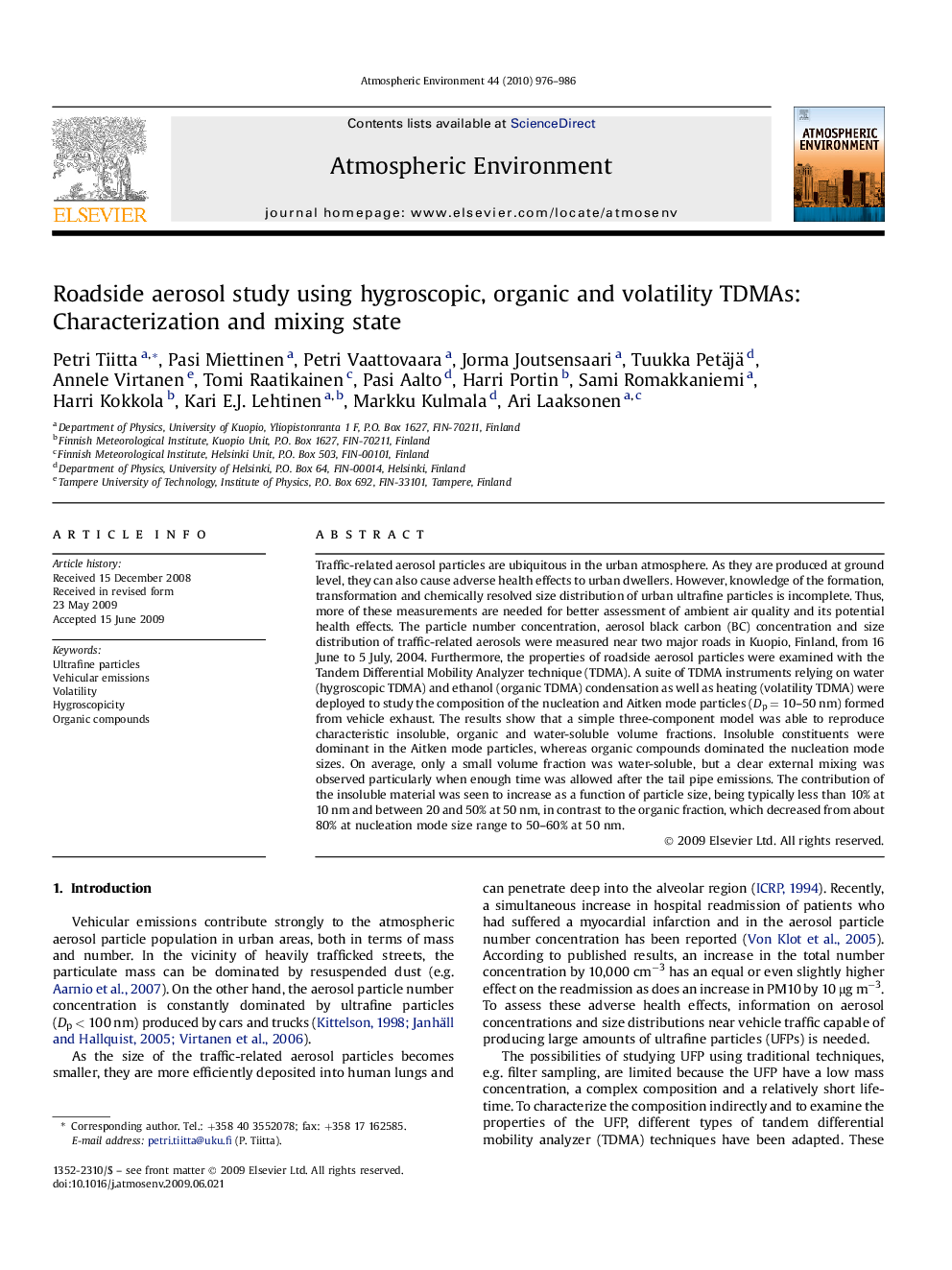| کد مقاله | کد نشریه | سال انتشار | مقاله انگلیسی | نسخه تمام متن |
|---|---|---|---|---|
| 4441072 | 1311090 | 2010 | 11 صفحه PDF | دانلود رایگان |

Traffic-related aerosol particles are ubiquitous in the urban atmosphere. As they are produced at ground level, they can also cause adverse health effects to urban dwellers. However, knowledge of the formation, transformation and chemically resolved size distribution of urban ultrafine particles is incomplete. Thus, more of these measurements are needed for better assessment of ambient air quality and its potential health effects. The particle number concentration, aerosol black carbon (BC) concentration and size distribution of traffic-related aerosols were measured near two major roads in Kuopio, Finland, from 16 June to 5 July, 2004. Furthermore, the properties of roadside aerosol particles were examined with the Tandem Differential Mobility Analyzer technique (TDMA). A suite of TDMA instruments relying on water (hygroscopic TDMA) and ethanol (organic TDMA) condensation as well as heating (volatility TDMA) were deployed to study the composition of the nucleation and Aitken mode particles (Dp = 10–50 nm) formed from vehicle exhaust. The results show that a simple three-component model was able to reproduce characteristic insoluble, organic and water-soluble volume fractions. Insoluble constituents were dominant in the Aitken mode particles, whereas organic compounds dominated the nucleation mode sizes. On average, only a small volume fraction was water-soluble, but a clear external mixing was observed particularly when enough time was allowed after the tail pipe emissions. The contribution of the insoluble material was seen to increase as a function of particle size, being typically less than 10% at 10 nm and between 20 and 50% at 50 nm, in contrast to the organic fraction, which decreased from about 80% at nucleation mode size range to 50–60% at 50 nm.
Journal: Atmospheric Environment - Volume 44, Issue 7, March 2010, Pages 976–986